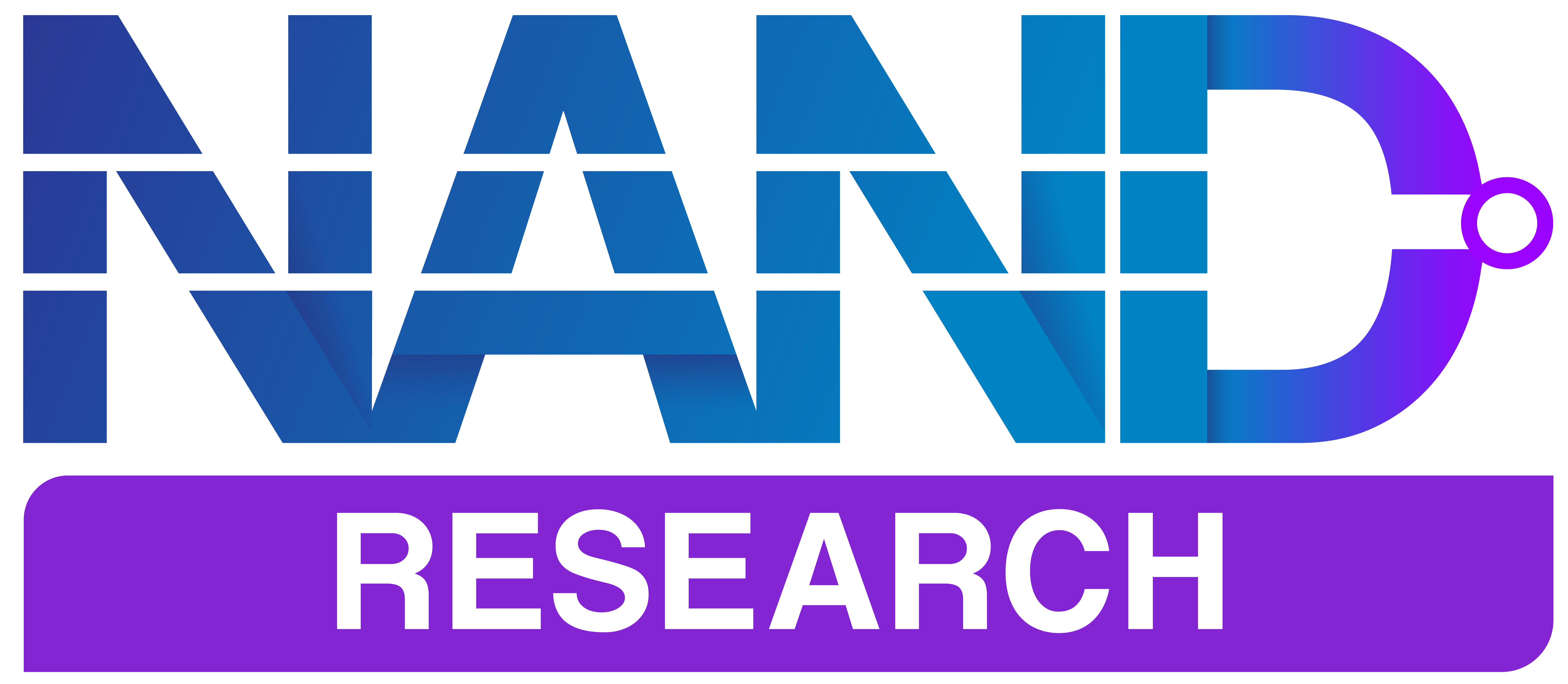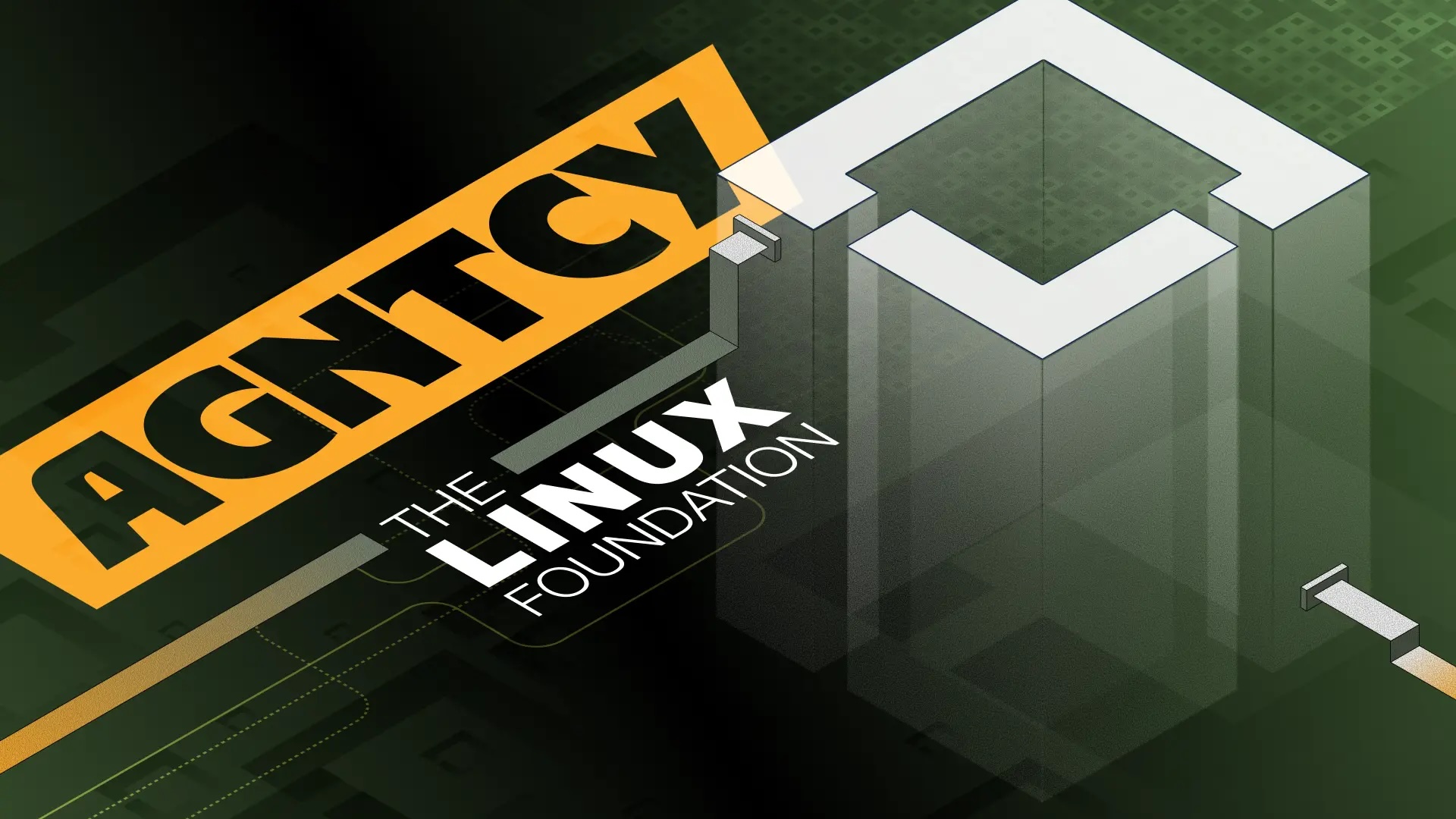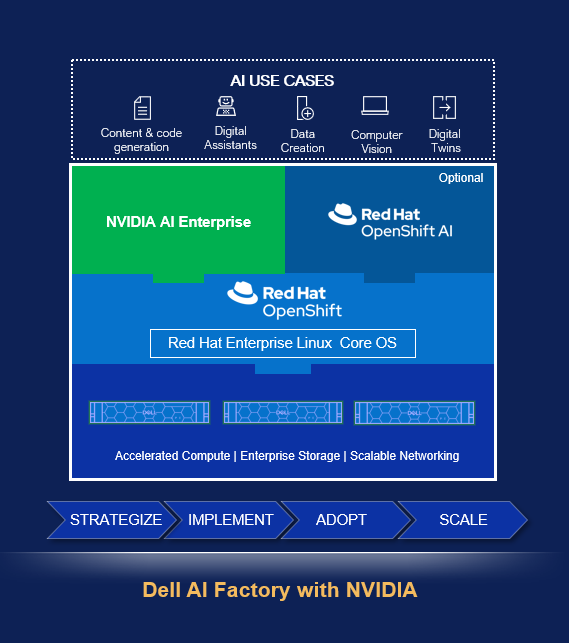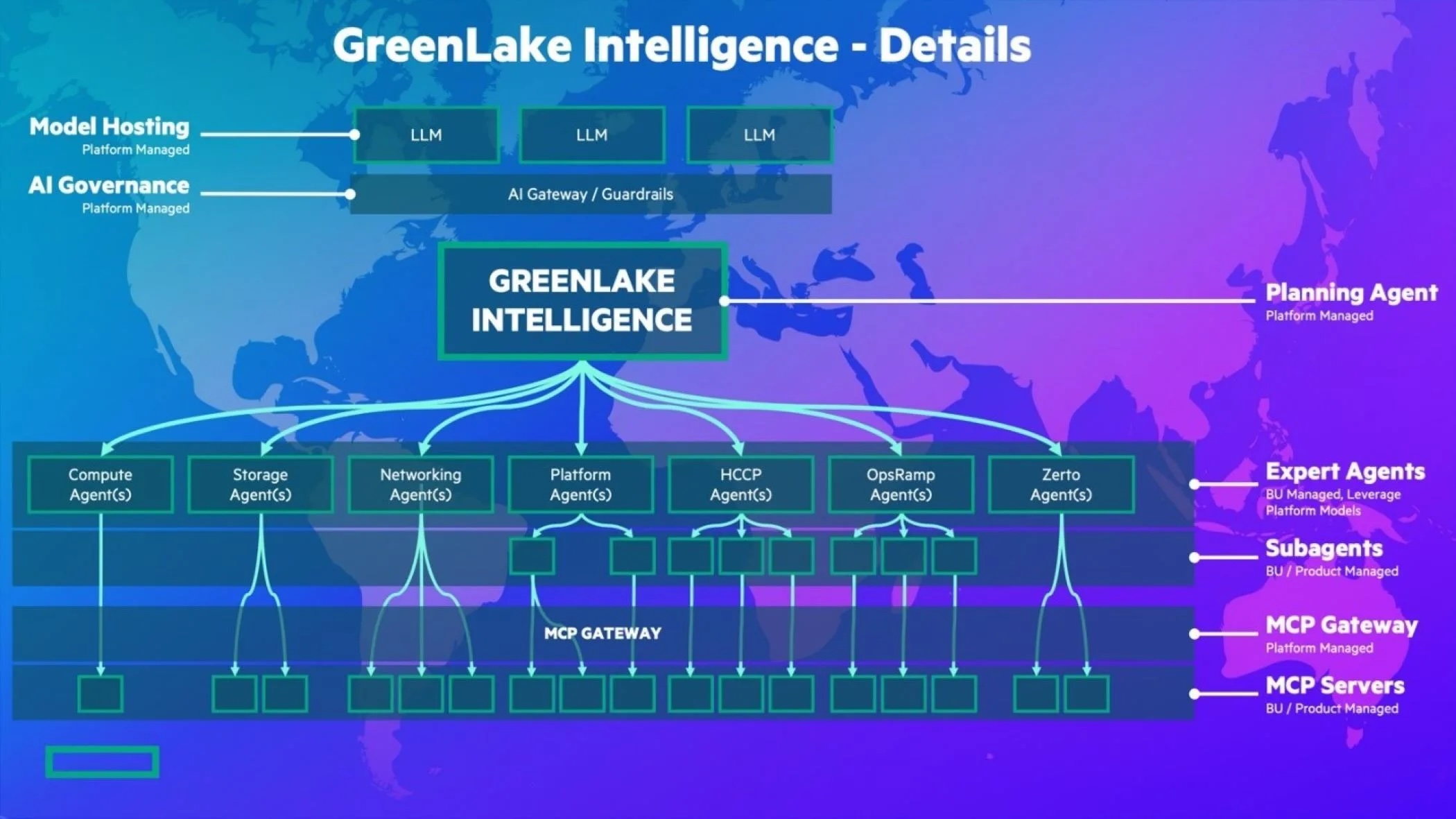At its 2025 Partner Summit in San Diego this week, Cisco announced three interconnected infrastructure initiatives to address the operational, connectivity, and edge-computing requirements of AI workloads.
The announcements span network management simplification through AgenticOps workflows, GPU-as-a-Service connectivity via SD-WAN integration with Megaport AI Exchange, and a new converged edge computing platform called Unified Edge.
These releases are Cisco’s response to enterprises struggling with AI pilot-to-production transitions, building on its June 2025 product launches and focus primarily on deployment simplification, unified management planes, and distributed computing architecture.
Network Management & AgenticOps Platform
Cisco announced multiple operational management capabilities centered around what it terms “AgenticOps,” which it describes as automation enhanced by real-time data analysis and AI-assisted workflows.
The technical components include:
Unified Management Consolidation
Cisco plans to integrate its Meraki and Catalyst Center management platforms into a single global view, addressing longstanding customer requests for unified network visibility.
This integration will provide:
- Single sign-on access across both management dashboards
- Consolidated alerting and network health monitoring
- Cross-platform visibility spanning campus and branch deployments
- General availability targeted for Q4 2025
Cloud-Managed Fabric Orchestration
Cisco will enable fabric architecture deployment through the Meraki dashboard, extending enterprise-grade segmentation capabilities to cloud-managed environments.
The functionality includes:
- Policy management automation for network segmentation
- Adaptive segmentation controls are accessible through cloud management
- Deployment automation for fabric architectures
- Scheduled general availability in Q1 2026
AI-Enhanced Automation Workflows
The company integrated Cisco AI Assistant into its exiting automation tool, Workflows. Cisco claims this integration enables the creation of automation using natural language, though specific technical implementation details regarding the AI model, training data, or accuracy metrics were not disclosed.
Announced capabilities include:
- Natural language-to-automation conversion for network configuration tasks
- Pre-built automation for switch migration and Wi-Fi setup
- Network configuration migration automation
- Integration with what Cisco calls “AI reasoning” for decision support
Wireless Updates
Cisco rolled out several infrastructure and hardware products focused on improviing enterprise wireless capabiltiies:
Cisco 8000 Series Secure Routers
The company announced new models in its 8200 and 8400 router families for branch and campus deployments. Cisco says these devices deliver “high-performance routing, advanced security, and ultra-low latency,” though it did not provide specific throughput metrics, latency benchmarks, or comparative performance data.
The routers integrate security capabilities directly into the routing platform and serve as components in Cisco’s Unified Branch architecture.
Wi-Fi 7 Access Points and Controllers
Three new access point models target low- and medium-density deployment scenarios:
- CW9171I, CW9174I, and CW9174E Wireless Access Points with integrated Cisco Spaces capabilities
- CW9800L Wireless Controller for dense campus environments
- Enhanced roaming capabilities across controller-managed deployments
- Scheduled availability in Q4 2025
Wireless Assurance Capabilities
Cisco announced expanded wireless monitoring and troubleshooting features:
- Roaming Health monitoring for connection handoff analysis
- Cisco ThousandEyes Active Testing for Wireless, extending the company’s network monitoring platform to wireless infrastructure
- End-to-end visibility for Wi-Fi 7 network performance
- AI-enhanced troubleshooting capabilities, though specific AI functionality was not detailed
Security Integration Architecture
Cisco announced several security integrations aimed at embedding access control and SASE functionality into its networking portfolio.
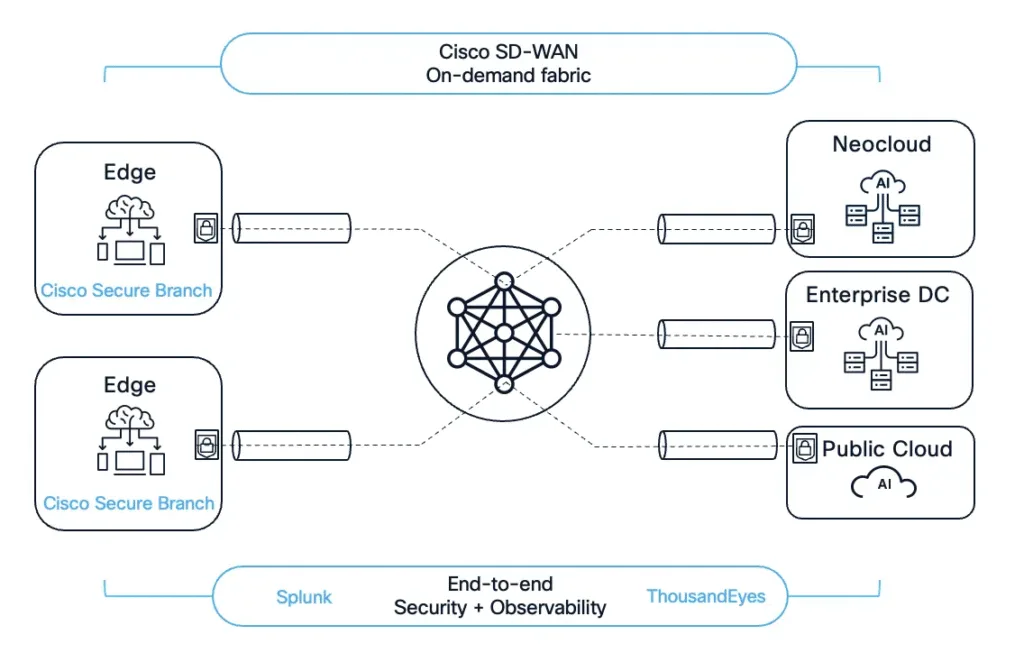
SASE Integration Across SD-WAN Portfolio
All Cisco SD-WAN offerings, including Meraki SD-WAN, now integrate with Cisco Secure Access to deliver what Cisco terms a “complete SASE offering.” This integration provides:
- Unified identity-based policy enforcement across SaaS, internet, and private applications
- Secure access service edge capabilities for hybrid workforce connectivity
- Zero-trust architecture extension from campus to cloud environments
- Policy consistency across multiple access methods
Cisco Access Manager
The company announced Access Manager, a SaaS-delivered access control solution that integrates Cisco ISE (Identity Services Engine) functionality into the Meraki dashboard. Technical capabilities include:
- Cloud-native architecture, eliminating on-premises hardware requirements
- Native integration with Meraki’s cloud management platform
- Identity-based access control delivered through existing management interfaces
- Cisco ISE policy engine running as managed service infrastructure
Cisco Unified Edge
The most technically detailed announcement centered on the new Cisco Unified Edge platform, which the company describes as the industry’s first integrated edge computing platform combining compute, networking, storage, and security.
Its architecture addresses distributed AI inference workloads and agentic AI applications requiring local processing.
Hardware Architecture and Modularity
Unified Edge employs a modular chassis design that consolidates multiple infrastructure components:
- Single chassis integrating compute nodes, storage, and networking switches.
- Support for both CPU-only and GPU-accelerated configurations within the same platform
- Hot-swappable, field-serviceable modules enabling incremental capacity expansion
- Redundant power supplies and cooling systems for high-availability deployments
- Pre-validated reference designs for specific use cases and workload types
Its modular approach allows customers to deploy initial configurations optimized for traditional workloads, then add GPU modules as AI inference requirements emerge, without replacing the underlying platform.
Compute and Accelerator Support
The new platform supports heterogeneous compute architectures through partnerships with processor vendors:
- Intel CPU options for general-purpose computing and traditional applications
- NVIDIA GPU configurations for AI inference and training workloads
- Flexible CPU-GPU ratios configurable based on workload requirements
- Support for multiple compute nodes within a single chassis
Integrated Networking Capabilities
Unified Edge incorporates Cisco SD-WAN networking directly into the platform chassis:
- High-performance SD-WAN networking nodes integrated at the system level
- Application-aware routing for AI inference traffic
- WAN optimization for model updates and data synchronization
- Support for multiple WAN links with automatic failover
The networking integration eliminates the need for separate branch routers in edge deployments, reducing device count and management complexity in distributed environments.
Storage Architecture
The platform includes integrated storage capacity for local data processing and model storage:
- Local storage for AI models and inference data
- Support for hot data caching to reduce latency
- Data synchronization capabilities for model updates from central repositories
Operational Management Model
Cisco extends its Intersight management platform to Unified Edge, providing centralized fleet management:
- Zero-touch deployment with device claiming through cloud management
- Automated policy enforcement across distributed edge installations
- Configuration drift detection and automatic remediation
- Remote troubleshooting and diagnostics without on-site intervention
- Centralized software updates and security patching
The management model applies the same operational approach used for Cisco’s data center infrastructure (UCS servers) to edge deployments, potentially reducing the learning curve for organizations already using Cisco compute products.
Observability Integration
Unified Edge integrates with Cisco’s observability platforms to provide infrastructure and application monitoring:
- ThousandEyes integration for network performance monitoring
- Splunk integration for log aggregation and analysis
- End-to-end visibility spanning edge compute, network, and applications.
- Telemetry collection for performance optimization and capacity planning
Security Architecture
The platform implements multi-layered security controls addressing both physical and cyber threats at edge locations:
- Verified boot process with cryptographic validation
- Hardware-based root of trust for platform integrity
- Tamper-evident physical security features
- Zero-trust network architecture applying identity-based access controls
- Application and workload segmentation
- Encrypted telemetry transmission to management platforms
- Automated vulnerability scanning and patch management
- Audit logging for compliance requirements
Cisco integrates its SASE and firewall technologies into the networking nodes within Unified Edge, providing security functionality without requiring separate security appliances at edge locations.
Impact to IT Organizations
The broad range of announced new products and capabiltities leave IT practitioners with a lot to consider. Let’s take a look at the highest-level considerations:
Operational Complexity Reduction
The unified management initiatives address legitimate operational pain points that practitioners consistently report. For example, organizations running both Meraki and Catalyst Center networks currently maintain separate management interfaces, training programs, and operational procedures.
The new integration consolidates these into a single operational model, potentially reducing training requirements and improving troubleshooting efficiency.
However, practitioners should note that the Q4 2025 timeline means this capability remains 12 months away, and the depth of integration between fundamentally different management architectures (cloud-native Meraki versus on-premises Catalyst Center) will determine the actual operational benefits.
The Unified Branch automation offers tangible time savings for organizations deploying multiple branch locations. Cisco’s claim of reducing days-long deployments to one-click operations represents a significant productivity improvement if the validated designs align with actual deployment requirements.
Infrastructure Deployment and Management
Unified Edge’s zero-touch deployment and centralized management through Intersight address a critical challenge in edge computing: managing distributed infrastructure without deploying technical staff to every location.
The operational model applies proven data center management practices to edge deployments, thereby reducing the specialized skills required at remote sites.
Organizations already using Cisco UCS and Intersight gain operational consistency across their infrastructure portfolio, while those new to Cisco’s management platforms face a learning curve.
The modular hardware design offers genuine flexibility for organizations uncertain about AI workload trajectories. Starting with CPU-only configurations and adding GPU modules as requirements crystallize protects against both over-provisioning (purchasing GPU capacity before workloads justify it) and under-provisioning (deploying platforms incapable of supporting future AI requirements).
However, practitioners should carefully evaluate whether the chassis-based approach aligns with their physical space, power, and cooling constraints at edge locations, as the integrated platform likely requires more substantial facilities than standalone compute servers.
Skills and Training Requirements
The AgenticOps capabilities and AI Assistant integration represent a shift in how network teams interact with infrastructure. Creating natural language-based automation can lower barriers for junior staff, but organizations should maintain technical depth within their teams rather than relying entirely on AI-generated configurations. The risk of “automation without understanding” could lead to difficult-to-diagnose issues when AI-generated workflows produce unexpected results.
Unified Edge requires skills spanning compute, storage, networking, and security —broad skill sets that traditional network-focused teams typically do not possess.
Organizations may need to restructure teams or invest in cross-training programs, representing both cost and organizational change management challenges.
Analysis
The infrastructure announcements from Cisco’s Partner Summit 2025 demonstrate a coordinated infrastructure response to enterprise AI deployment challenges, spanning management simplification, connectivity optimization, and distributed computing.
The initiatives address legitimate operational pain points, particularly the complexity of managing heterogeneous infrastructure and the difficulty of connecting to distributed AI resources.
The unified management vision, while operationally appealing, requires successful integration of fundamentally different architectures (cloud-native Meraki and on-premises Catalyst Center). Practitioners should maintain realistic expectations about the timeline and completeness of this integration, as the Q4 2025 delivery date remains a year away and technical details remain sparse.
Integrating SD-WAN and Megaport provides a concrete solution for organizations requiring high-performance connectivity to GPU-as-a-Service platforms, though cost-benefit analysis depends on specific workload requirements and current connectivity approaches.
Unified Edge is the most substantive announcement, delivering a genuinely integrated edge computing platform that addresses distributed AI inference requirements. Its modular architecture offers practical flexibility for organizations navigating uncertain AI workload trajectories, while the operational management model applies proven data center approaches to edge deployments. As the market stands ready (finally) to expand the enterprise edge, Cisco delivers the right solution at the right time.
A Unifying Strategic Theme
The common thread across all announcements is Cisco’s recognition that AI workload success depends not primarily on raw infrastructure performance, but on operational simplicity and architectural integration.
While competitors may offer faster processors, higher bandwidth switches, or more specialized edge platforms, Cisco bets that most organizations lack the technical depth and operational resources to successfully integrate and manage complex multi-vendor infrastructures at scale.
This sees Cisco targeting the operational reality that more than half of enterprise AI pilots stall due to infrastructure constraints. This isn’t because the technology doesn’t exist, but because organizations cannot successfully deploy and operate it.
For enterprises struggling to move AI initiatives from pilot to production, Cisco’s integrated approach offers a clear path forward, reducing operational complexity and vendor coordination overhead.
Organizations should evaluate these announcements not against their actual ability to successfully deploy, secure, and operate distributed AI infrastructure with existing staff and budgets. That practical operational lens, rather than pure technical capabilities, likely determines whether Cisco’s vision resonates with its target enterprise market.
Overall, it’s a strong set of offerings. The new
Competitive Outlook & Advice to IT Buyers
Cisco brings several competitive advantages to these announcements:
- Installed Base: Cisco’s dominant market share in networking provides an existing customer base for upselling edge computing and management capabilities. Customers already running Cisco networks face lower integration barriers than greenfield deployments.
- End-to-End Portfolio: Few competitors offer comparable breadth spanning networking, security, compute, and management. This breadth enables the unified architectures Cisco emphasizes, though it also increases complexity.
- Operational Maturity: Cisco’s Intersight management platform and UCS operational model have years of production deployment. Applying proven approaches to edge computing reduces operational risk compared to emerging vendors with less mature management platforms.
- Security Integration: Fusing security into infrastructure rather than requiring separate security products reduces both cost and operational complexity. Cisco’s history of acquisitions (Duo, Splunk, ThousandEyes) provides security and observability capabilities that most infrastructure vendors lack.
These advantages, however, are tempered by a significant competitive headwind…
These sections are only available to NAND Research clients and IT Advisory Members. Please reach out to [email protected]to learn more.
